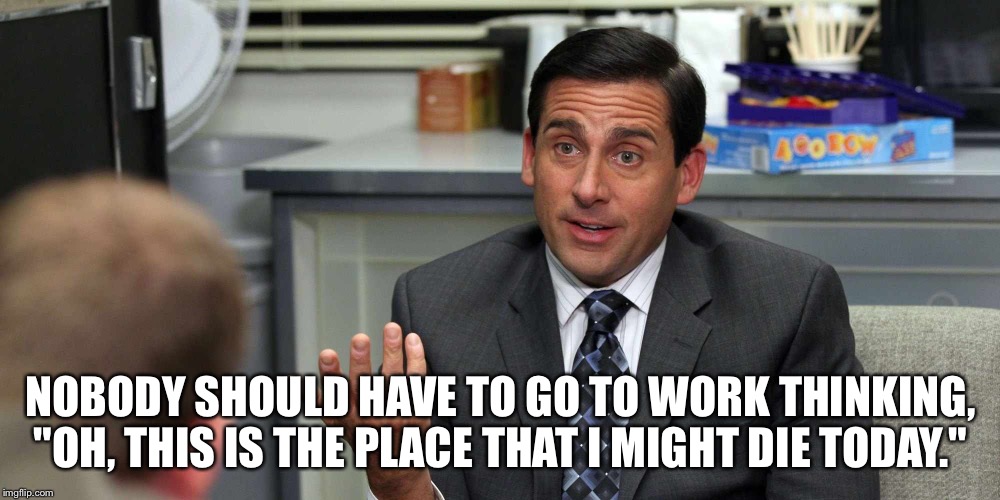You come into work, thinking it’s going to be just another day in the office. You have a friendly chat about your weekend with the office manager while pouring yourself a hot cup of coffee. You make your way over to your desk, and just as you start looking through your email, a nervous employee pops their head in and asks for a minute of your time.
At this point, the next sentence comes as no surprise: “I’m giving my two-weeks notice.”

Job-hopping has become the norm. While fifty years ago, people held positions for ten or more years, today, workers only average about four years at each job. And the stigma associated with switching jobs has also decreased. Employees that spent less than a few years at a job used to be considered flighty—now they’re considered ambitious and ahead of the curve.
The odds are stacked against you, but all hope isn’t lost when it comes to employee retention.
While some clues will tip you off right away—such as too many “doctor’s” appointments, or employees coming in dressed suspiciously well—most of the time, the signs that your employees are job-hunting are considerably more discreet. If you learn how to pick up on these subtle cues, you can nip this problem in the bud and retain some of your most valuable employees.
Here’s how to spot when employees are looking for a new job (and what you can do about it).
1. Their Productivity Has Decreased
Productivity is the most obvious indicator that an employee has lost enthusiasm for the job. They’ve started to simply go through the motions and do the bare minimum to avoid suspicion. The worst part is that their lack of enthusiasm can affect the whole team—just one slacker can bring down the rest of your team’s productivity by 30%.
But spotting the underperformers is tough when you have a team to manage, especially since everyone has their off days. Keep track of your employees’ output by:
- Holding asynchronous check-ins. Ask every employee to check in at the end of each day and tell you what they’ve accomplished. This gives you visibility into output, and, as an added bonus, makes the rest of your team feel motivated by how much they’ve accomplished.
- Having face-to-face 1:1s. It’s harder to hide dissatisfaction in person than it is via email or on chat. Spare a few minutes of face-time to check in at least once a month and make sure that everything is going smoothly.
The effectiveness of these check-ins will depend on what you use them for. Make it clear to your team that these meetings aren’t to police productivity, but rather to inform you about how you can help.
Once you’ve pinpointed who are disengaged, you can start crafting a re-engagement plan.
Employee Retention Solution: Re-Engage with OKRs
Objectives and Key Results (OKRs) are a technique used by big companies like Intel and Google to set goals and keep track of progress—but they have psychological benefits as well. They facilitate trust between managers and employees by making expectations explicit and aligning high-level goals, and they give the employees an opportunity to have ownership over the work that they do.
All you need to set it up is have a monthly or quarterly meeting where you work with your employee to decide their objectives (their high-level, qualitative goals) and their key results (quantitative measures of those goals). Experts suggest that you set these goals a bit beyond reach, so the employees push themselves every quarter.
2. They Aren’t Volunteering for Long-Term Projects
Some employees don’t let their performance slack, even when they’re on the job hunt. They want to leave a positive impression, so they make sure to still give it their all until the last day on the job. This kind of hard work and accountability has likely made them some of your most valuable employees—but their disengagement is the hardest to spot.
An indicator that these employees are thinking about other options is their lack of commitment to long-term projects. Look for the following subtle hints:
- Not committing to meetings or events far in the future. If you sent a meeting invite for an event three months down the line, a “pending” request is a red flag.
- Not joining any long-term initiatives. Employees interested in growing in their jobs look for any chance to be involved in new initiatives. Employees that pass on these opportunities don’t see a future for themselves at your company.
When you’re not on the lookout for these signs, it may just seem like an employee isn’t interested in certain initiatives or events. But their disengagement will become evident once you notice the patterns of their continued lack of commitment.
Employee Retention Solution: Show Them the Opportunity for Growth
According to a survey by EY of 9,700 full-time employees, lack of growth opportunities is one of the biggest reasons that employees leave their jobs. Employees don’t see a clear path for success at your company, so they use it as a stepping stone.
To get people to stick around and commit to more long-term projects, clarify your employees’ roles and show them that there’s an opportunity for growth. The easiest way to do this is to have an organizational structure that employees can reference in your company documentation. It’ll set expectations when they first start the job and clarify their trajectory if they decide to move laterally.
3. They’ve Distanced Themselves from the Team
Psychologists claim that “job embeddedness” is what makes employees hesitate to leave jobs they’re dissatisfied with. They fear detaching themselves from the community and environment that they’ve grown used to. This explains why people with one foot out the door start to slowly distance themselves from their peers.
As a manager, however, the workplace dynamic of your team isn’t always clear. Your employees are likely less open with you than they are with each other—they never ping you on Slack to tell you about their favorite new song or tell you about their weekend plans at the watercooler. Here are some cues you can pay attention to:
- They don’t engage in the office chatroom. They’re not jumping in on the discussion of the new policy or voicing their opinions on projects that they’re a part of. Many chat tools, such as Slack, offer analytics to show which employees engage the least with their team.
- They ditch happy hour. They’re hesitant to spend casual time with their co-workers, running off each time with one excuse or another.
- They stop eating lunch with team members. All of a sudden they have lunch plans every day, but it’s never with their co-workers.
If you notice that an employee is isolating themselves, it’s probably because they’re having trouble communicating about the stuff that actually matters.
Employee Retention Solution: Improve Your Company Culture
You don’t want employees to stick around because of some version of Stockholm Syndrome—you want them to stick around because the job makes them happy. While culture isn’t something you can fix overnight, you can institute working conditions that make the job a healthier part of every employee’s lifestyle.

According to a 2017 Gallup study, 53% of employees say a role that allows them to have greater work-life balance and better personal well-being is “very important” to them. Consider introducing flexible hours or allowing employees to work from home a few days a week.
4. They’ve Stopped Complaining
Nobody’s work is perfect, particularly in the startup scene. A growing business is a work-in-progress, and employees that believe in its mission voice their concerns so that they could iterate and improve it together. But when those problems and concerns fall on deaf ears, employees give up on the job altogether.
While you’re listening and addressing the concerns of employees that are only slightly dissatisfied, the employees who are at the greatest risk of churn are looking for other jobs in silence. Here are the signs to look out for:
- They are more active on job search sites. If they’ve updated their profiles on sites like LinkedIn, Angel List, or Indeed, they’re on the lookout for something better to come along.
- They’ve been leaving work at 6pm on the dot. Their mind is elsewhere during work hours and they’ve been counting the minutes to leave.
- They’ve stopped contributing to project discussions. They seem to have lost an opinion on nearly everything. Rather than contribute to a conversation, they just agree with someone else’s opinion.
When employees are most intent on leaving, you won’t hear a word from them. They don’t believe that you’re interested in improving their job. If you can spot this behavior in time, however, you can prove them wrong.
Employee Retention Solution: Create Feedback Loops
Create systems that make sure your employees are being heard. Sociology expert Miki Kashtan says that feedback is instrumental to our success: “Both our capacity to grow as individuals and our capacity to create and maintain relationships and organizations that thrive are dependent on giving and receiving feedback.”
Create opportunities for employees to give honest feedback on how they feel about work, management, and their team. If your team is small, anonymous surveys should do the trick. As your team gets larger, it may make sense to hire a People Ops person who can gather feedback and learn the persistent problems within the organization.
Be Proactive About Employee Retention
Employee retention and turnover is one of the toughest parts of leadership. You’ve poured dozens of hours of your time onboarding, training, and mentoring your employees, so it’s hard not to feel even a small pang when you learn that they’ve decided to move on. But the worst is far from over—according to a CIPD poll, 25% of employees are actively looking for new opportunities.
To beat those odds, you need to proactively work to improve the workplace. Don’t wait until an employee is on the verge of quitting—look for ways to better the work environment even when everyone seems happy. Your commitment to your employees will be evident and encourage more loyalty from your team.
